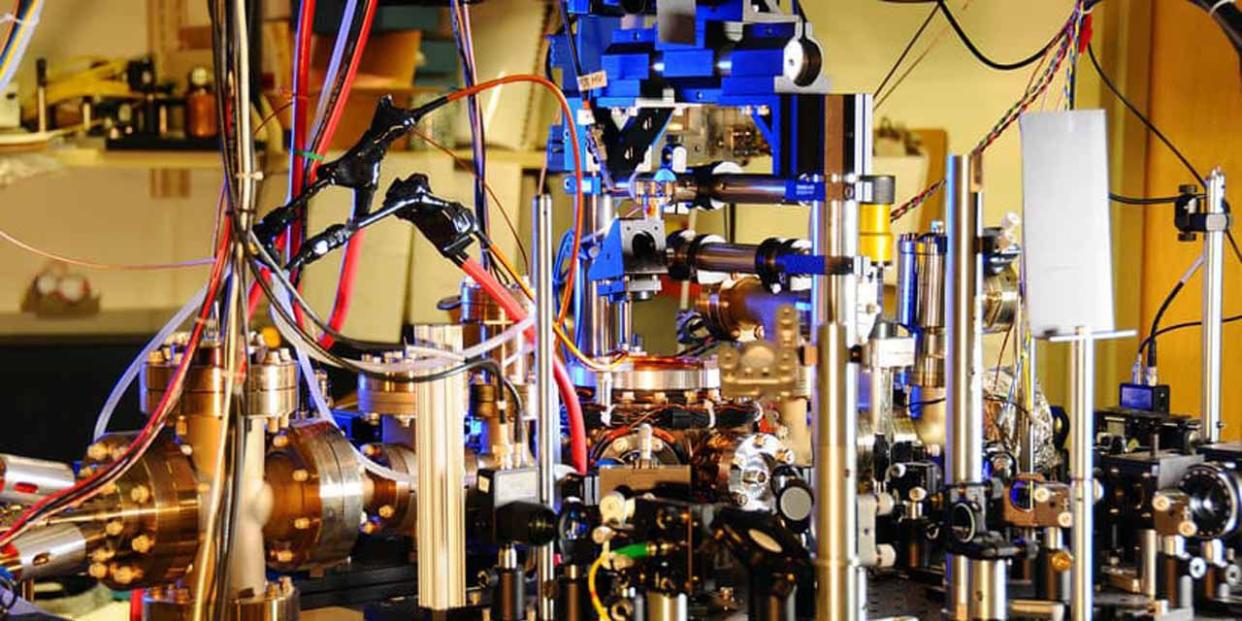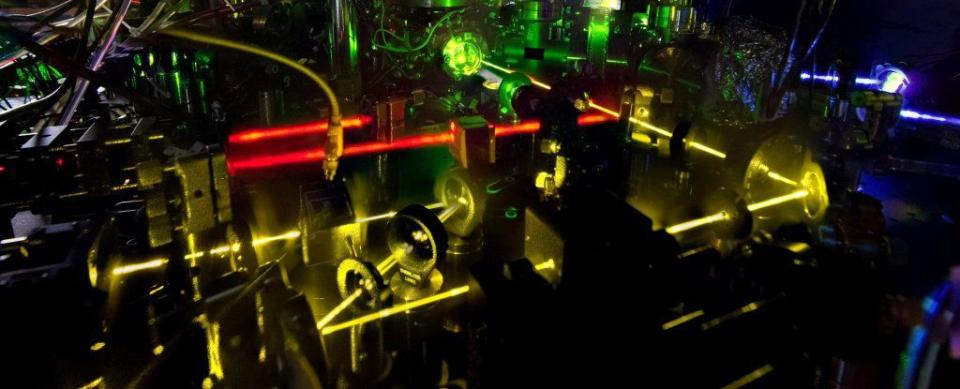Our New Atomic Clock Is So Precise That We Need a Better Understanding of Gravity To Use It

The scientists at the National Institute of Standards and Measurement have one big job: to measure things as accurately as possible. To do that, they build a lot of big and complicated machines, including precise tape measures and absolutely gigantic scales.
For the past few years, NIST has been building the world’s most accurate clock, and new research shows it’s actually too precise. How so? It turns out our understanding of the Earth’s gravity is not good enough to take full advantage of the clock.
NIST’s clock doesn’t use gears or springs or even quartz crystals like what's inside a modern wristwatch. Their atomic clock, which occupies an entire table, works by hitting atoms with microwave radiation, which causes electrons inside those atoms to oscillate at a specific frequency.

That frequency is so precise, scientists can use it to tell time. In fact, that oscillation frequency is so precise that in 1967, scientists actually used it to define the second. That’s why it’s so important for NIST to build the most sensitive atomic clock in the world: the accuracy of this one clock will end up affecting every other clock.
There’s just one problem with this plan, and it’s Albert Einstein’s fault. In 1915, Einstein published his famous theory of general relativity, which says objects that have mass actually distort space, making it curve. General relativity also says that space and time are linked, which means that distorting space also distorts time. Specifically, the stronger the force of gravity in a place, the more time slows down.
Normally, this isn’t a problem for life on Earth. Gravity doesn’t change much as you move around the planet, and even going high into the atmosphere on a plane won’t speed up time by any noticeable amount. But for the most accurate atomic clock ever made, small changes in gravity matter a great deal.
In order for NIST’s scientists to accurately know what time it is, they have to know how strong the force of gravity is at the location of their clock. Because the Earth isn’t a perfect sphere, gravity can change by small amounts from inch to inch and foot to foot. Instruments on satellites have measured the force of gravity all over the Earth to an accuracy of a few feet, which has been enough for atomic clocks in the past. But NIST’s new clock is so accurate it needs to know the force of gravity every single centimeter, which is currently beyond the ability of science.
The good news is that by making more of these highly accurate atomic clocks, scientists can use them to provide that kind of resolution across the entire globe. It will take a while, but this kind of improvement can help scientists keep track of time even better than before, which will benefit countless experiments in the future.
('You Might Also Like',)

